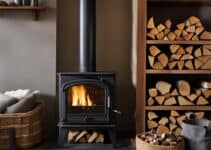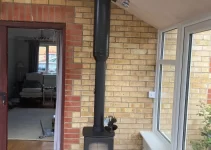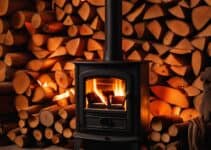Log burners are reliable, economic and a delightful way to warm your home.
But one of the most frequently asked questions for people considering adding a log burner is: are log burners safe to leave? And the short answer is: it’s complicated. Any flame in the home is a risk. So knowing safe ways to protect your assets and your family is a must if you’re thinking of installing a log burner or wood stove.
It’s especially important to know safe ways to handle your log burner if want to leave it unattended.
Can You Leave a Log Burner Unattended?
No flame is safe to leave unattended. And while log burners are far safer to leave than open fires, it is best to let your log burner die down completely before leaving the home or leaving it for extended periods unattended.
There are a number of risks attached to having a log burner in the home such as chimney fires, sparks from an open door catching and carbon monoxide poisoning. But we must remember that these risks are greater if you have an open fire.
And we must also keep in perspective the level of risk that any home appliance or heating system poses. Electrical wiring faults, faulty appliances or gas leaks all pose a health risk.
And most homeowners are already used to prioritising safety at home by employing appropriate measures to balance the risk.
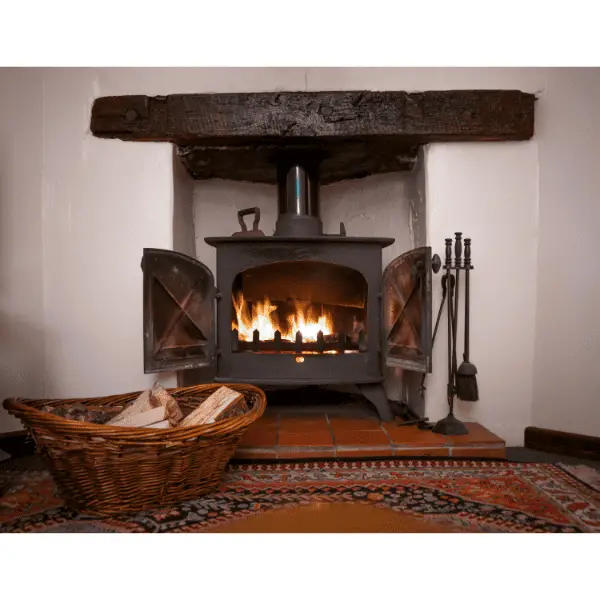
Leaving Log Burner Unattended
With log burners of any sort, it pays to know the safety measures open to you, including how to put out your log burner safely before leaving it unattended.
The best way to do this is to reduce the oxygen inside the burner.
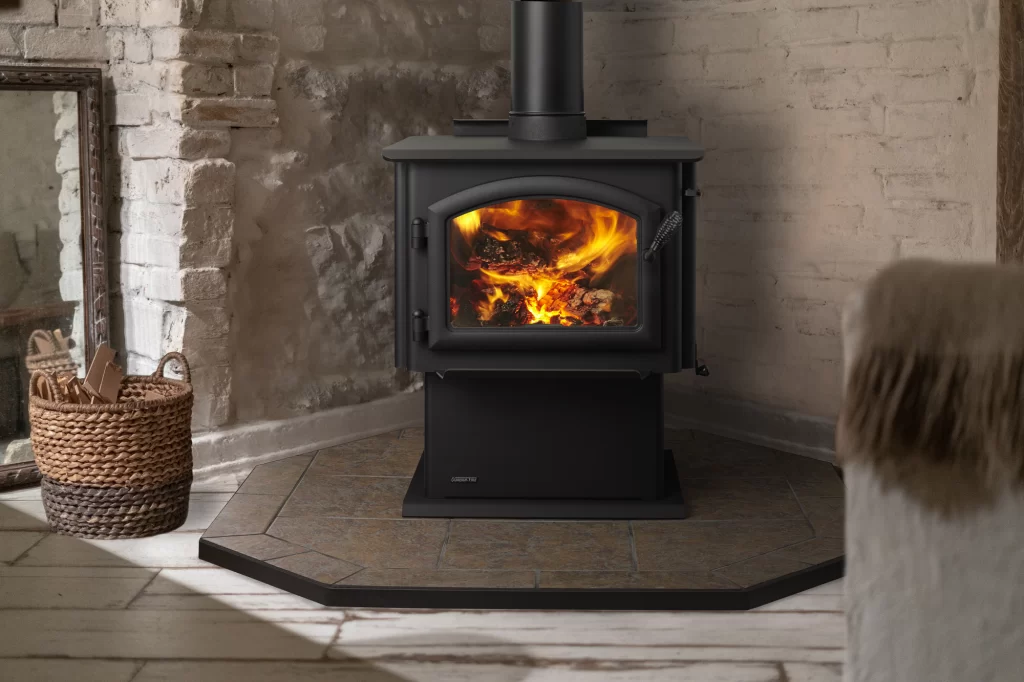
How to Make Your Log Burner Safe to Leave Unattended
It is by far the safest option to let your log burner go out naturally. But if that’s not an option you should put it out as safely as possible. We go through some tips about log burner safety here:
Firstly, you should close the air vents to your burner and make sure the door is secured. Then wait until the flames have died down completely and there are only embers left on your logs.
If you then want to extinguish the smouldering embers on the logs, you can. Then put on your heat-resistant gloves before carefully opening the door and spreading out the remaining pieces of fuel. You could use your poker to do this too for added safety.
At this point, you could close the door and wait until the embers die down. Or if you want to put them out entirely, you could use a misting sprayer to lightly spray the embers with water. Do not throw water over flames.
Once the embers are extinguished, you should firmly close the burner door to reduce the chance of the fuel reigniting from the added oxygen. This also prevents fumes from entering your home.
You could remove the ashes as a final added safety measure.
Is it safe to leave a log burner on overnight?
It’s better to make sure your log burner has died down naturally before going to bed. But it’s safer to leave your log burner to die down when you go to bed than to put it out manually.
This may sound contradictory but it’s the sensible option. Every time you open the door you increase the amount of oxygen in the body of your burner which will affect the flame within.
It also allows more toxic gases back into the air of your home and both these things should be avoided where possible.
If you have been sitting or working by your log burner during the evening and have watched it dampen down, you can generally judge when it is safer to leave it.
But we’ve gathered together some options that you could consider as added safety measures when leaving your log burner overnight.
Restrict the Oxygen
You should take all the measures you can to limit the air intake to your log burner. Fire uses oxygen to burn and so reducing the airflow will interfere with the combustion triangle.
Close the vents and secure the door, and you’ll find the flame goes out quicker.
Prioritise Safety Around the Burner
Leaving clothes drying in front of your functioning log burner is a no-no. And by extension, leaving any combustible item near a lit or partially lit log burner isn’t the safe option.
Check that the area around your stove has no flammable objects nearby – even when you have secured the door and closed the vents. You cannot foresee all accidents but it doesn’t hurt to reduce as many potential risks as possible.
Don’t Neglect Safety Checks
It’s probable that your insurance already requires you to have your burner checked annually. It is also probable that your insurer also requires you to get your flue checked and chimney swept annually too.
Don’t neglect this. It’s your fail-safe to make sure your log burner is working for you rather than against you.
But these checks aren’t where your safety should begin and end. It’s important to practice good maintenance year-round.
You can do basic cleaning and maintenance yourself if you know what you’re doing. And if not, hiring a professional to service your log burner every so often is surprisingly affordable.
You’re not only paying to maintain the longevity of your burner, but you’re also paying for peace of mind.
Don’t Burn Anything You Shouldn’t
Use the right fuel for your burner. Using well-seasoned wood for log burners is essential. It’s equally essential for multifuel stoves too. Check that your wood is around 20% moisture content for optimum efficiency and safety.
Leaving Wood Fireplaces on Overnight
If you have an open fire or wood fireplace, you should not leave it burning overnight. Because it is ‘open’ it’s a far greater fire risk.
We would suggest staying by your wood fire until it has died down naturally. Or, if you want it to dampen quicker, you could use your poker to spread the remaining fuel around the grate.
This will allow oxygen to increase the burning rate of your fuel and it will go out quicker.
Using methods that unnaturally put out a fire is quite hazardous and should be avoided where possible.
Installing a log burner or a multifuel stove is going to be a safer option than having an open fire. But whichever method you choose, it’s never a good idea to leave any burning item unattended.
Allow your log burner to go out naturally and learn all the necessary safety measures that will put your mind at ease.

Can You Leave a Wood Burning Stove Unattended
Leaving your wood burning stove unattended isn’t advised. You’re risking potential fire outbreaks or carbon monoxide poisoning. While log burners have evolved and become safer over the years, they still require cautious use. Therefore, for safety’s sake, I wouldn’t recommend leaving a lit log burner unattended.
